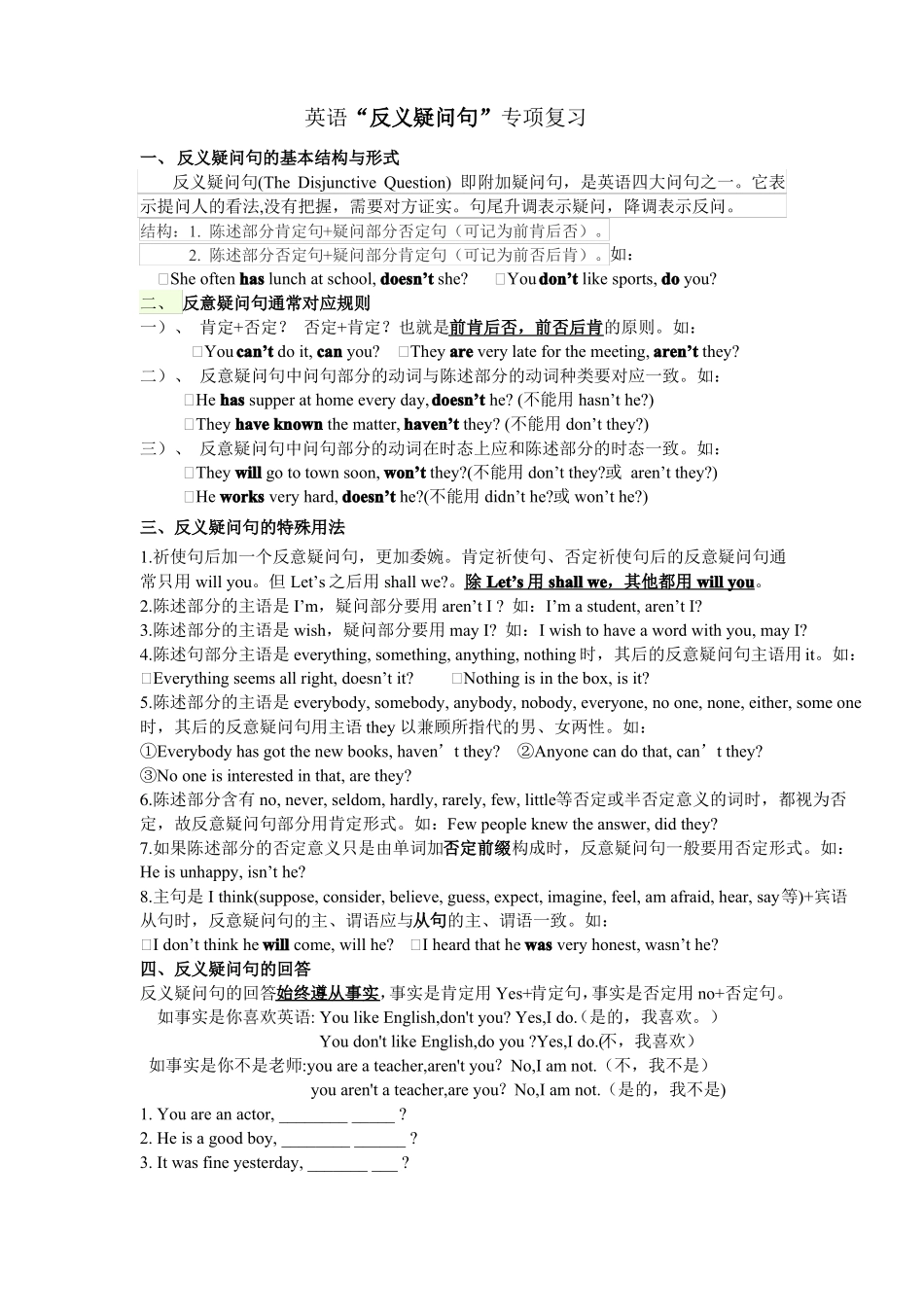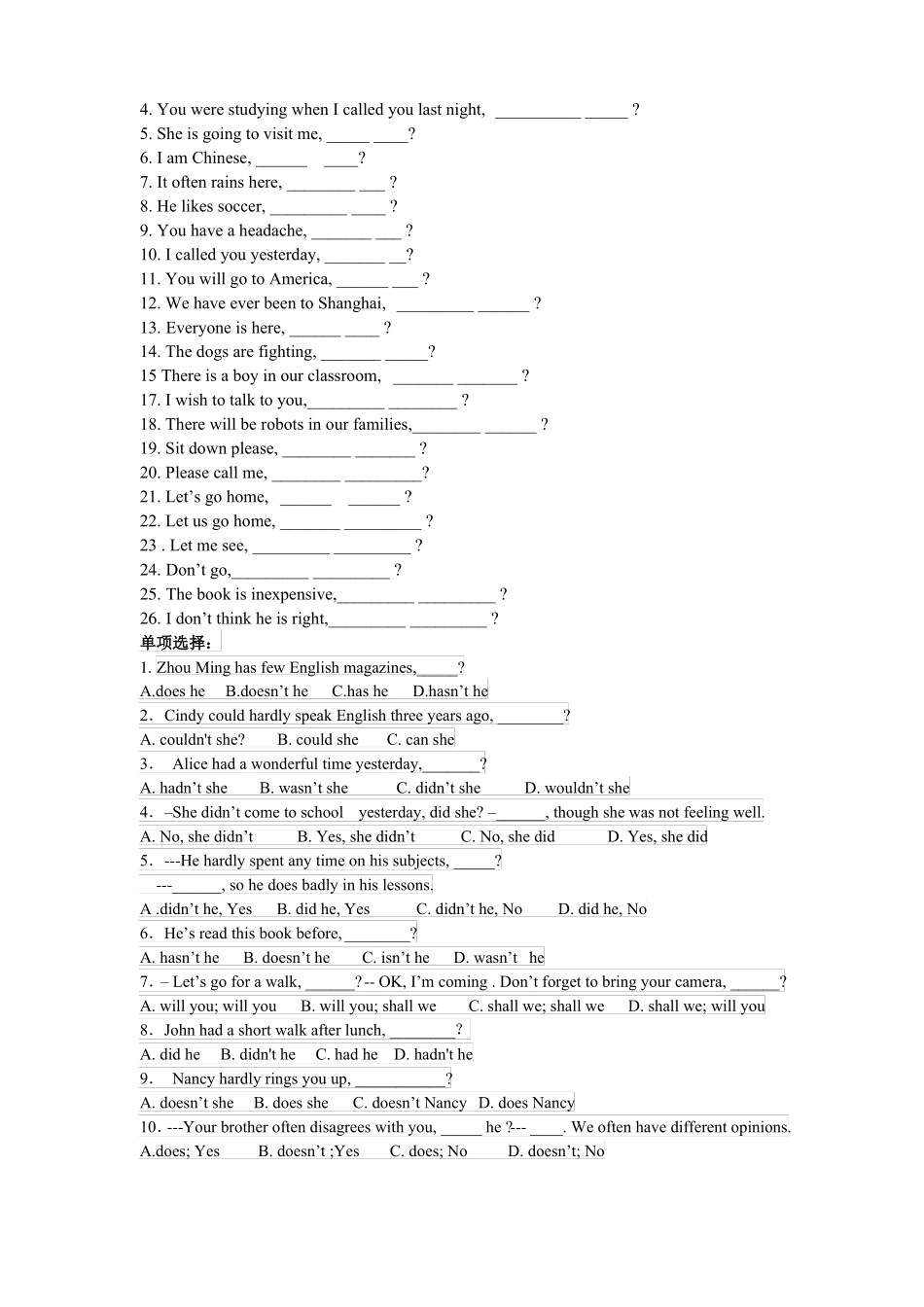英语“反义疑问句”专项复习一、 反义疑问句的基本结构与形式反义疑问句(The Disjunctive Question) 即附加疑问句,是英语四大问句之一。它表示提问人的看法,没有把握,需要对方证实。句尾升调表示疑问,降调表示反问。结构:1. 陈述部分肯定句+疑问部分否定句(可记为前肯后否)。2. 陈述部分否定句+疑问部分肯定句(可记为前否后肯)。如:①She often has lunch at school, doesn’t she?①Youdon’t like sports, do you?二、 反意疑问句通常对应规则一)、 肯定+否定? 否定+肯定?也就是前肯后否,前否后肯的原则。如:①You can’t do it, can you?①They are very late for the meeting, aren’t they?二)、 反意疑问句中问句部分的动词与陈述部分的动词种类要对应一致。如:①He has supper at home every day,doesn’t he? (不能用 hasn’t he?)①They have known the matter, haven’t they? (不能用 don’t they?)三)、 反意疑问句中问句部分的动词在时态上应和陈述部分的时态一致。如:①They will go to town soon, won’t they?(不能用 don’t they?或 aren’t they?)①He works very hard, doesn’t he?(不能用 didn’t he?或 won’t he?)三、反义疑问句的特殊用法1.祈使句后加一个反意疑问句,更加委婉。肯定祈使句、否定祈使句后的反意疑问句通常只用 will you。但 Let’s 之后用 shall we?。除 Let’s 用 shall we,其他都用 will you。2.陈述部分的主语是 I’m,疑问部分要用 aren’t I ? 如:I’m a student, aren’t I?3.陈述部分的主语是 wish,疑问部分要用 may I? 如:I wish to have a word with you, may I?4.陈述句部分主语是 everything, something, anything, nothing 时,其后的反意疑问句主语用 it。如:①Everything seems all right, doesn’t it?①Nothing is in the box, is it?5.陈述部分的主语是 everybody, somebody, anybody, nobody, everyone, no one, none, either, some one时,其后的反意疑问句用主语 they 以兼顾所指代的男、女两性。如:①Everybody has got the new books, haven’t they?②Anyone can do that, can’t they?③No one is interested in that, are they?6.陈述部分含有 no, never, seldom, hardly, rarel...


